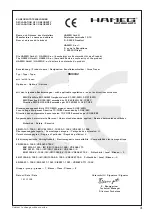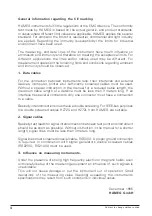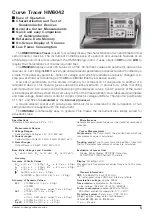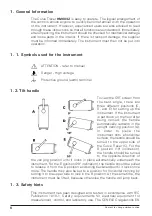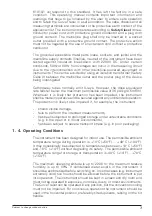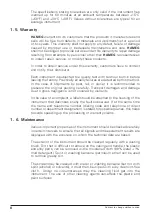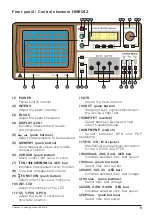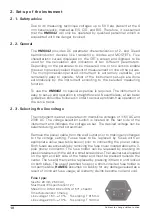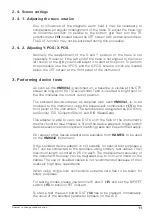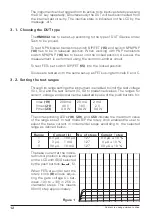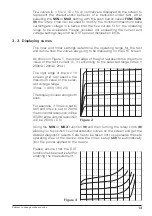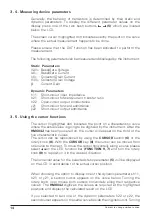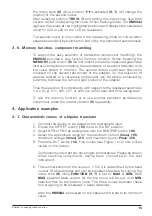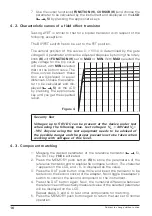
Subject to change without notice
16
7. Use the cursor functions
(FUNCTION (9), CURSOR (8))
and choose the
parameter to be calculated by the instrument and displayed on the
LCD
(
← →,
← →,
← →,
← →,
← →,
5)
by pressing the appropriate keys.
4. 2. Characteristic curves of a field effect transistor
Testing a FET is similar to that for a bipolar transistor with respect of the
following exceptions:
The BIP/FET switch has to be set to the FET position.
The vertical position of the curves I
D
= f(V
DS
) is determined by the gate
voltage (U
G
) parameter and can be adjusted stepwise by turning the rotary
knob
(8)
with
FUNCTION (9)
set to
MAX
or
MIN
. With
MAX
selected the
gate voltage for the top curve
will be set, with
MIN
selected
that for the bottom curve. The
three curves between these
two are displayed in equal
distances.Choose the parame-
ter to be calculated and dis-
played
(
← →
← →
← →
← →
← →
,,,,,
5)
on the LCD
by pressing the appropriate
key until you get the expected
result.
Figure 4
Security hint
Voltages up to 50V DC can be present at the device under test
when using the following max. test voltages: V
D
= 40V and V
G
=
-10V. Anyone using the test equipment needs to be advised of
the possible danger and the proper precautions to be taken when
working with voltages of this level.
4. 3. Component matching
1. Measure the desired parameter of the reference transistor (
← →
← →
← →
← →
← →
, 5),
the DUT key
(14)
is activated.
2. Press the MEMORY push button
(5)
to store the parameters of the
reference transistor and to enable the compare function. The character
? appears on the LCD, and - 0 - is displayed as the value.
3. Press the DUT push button once more and insert the transistor to be
tested into the second socket of the adapter. Now toggle the adapter’s
switch to connect the second component to the instrument.
4. Press the DUT button again. Now, the numerical difference between
the reference and the actually measured value of the selected parameter
will be displayed on the LCD.
Repeat steps 3. and 4. to test other components for matching.
5. Press the MEMORY push button again to return the test set to normal
operation.


